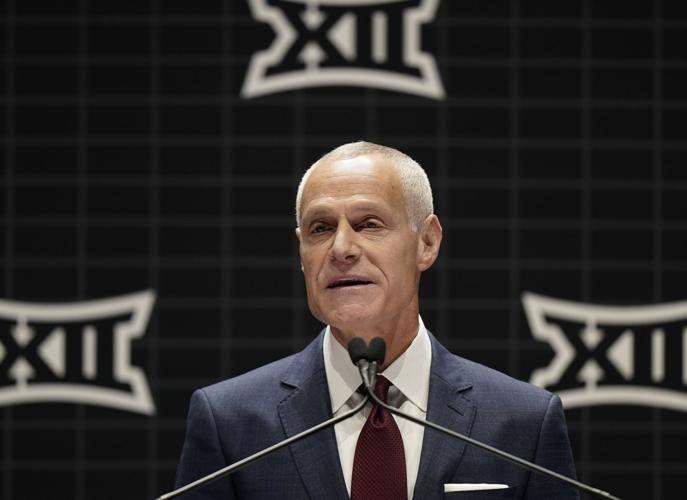The Big 12 concluded its spring business meetings on Thursday with a look to the fall competition season and the ever-present legal issues shaping the future of college sports.
Commissioner Brett Yormark and Baylor president Linda Livingstone, chair of the Big 12 board of directors, fielded questions from the media at the conclusion of the conference meetings in Irving, Texas.
Before the discussion turned to the House v. NCAA lawsuit settlement, Livingstone managed to highlight the Big 12’s greatest strength: its competitive balance across multiple sports — a state of affairs that should continue when the conference grows to 16 schools this summer with the arrival of Arizona, Arizona State, Colorado and Utah and the exit of Texas and Oklahoma.
“It will be compelling to watch,” she said, “and I don’t know that you’ll see that in other conferences.”
Although Livingstone didn’t name names, or specify sports, the first Big 12 football season without the Longhorns and Sooners should be fascinating.
Unlike the SEC and Big Ten, the Big 12 lacks a prohibitive favorite. Kansas, Kansas State, Utah, Arizona, West Virginia, Iowa State and Oklahoma State are all considered candidates to reach the conference championship. No team carries a projected win total, as determined by FanDuel, in the double digits.
“I think about November,” Yormark said, “and how the race for the championship will create engagement with fans.”

Big 12 commissioner Brett Yormark said the conference is more relevant than it has ever been even though Oklahoma and Texas are leaving.
The news conference eventually focused on the issue looming over college sports: The settlement agreement in the House v. NCAA lawsuit that was approved by the major conferences last week.
“It gives us a framework,” Livingstone said. “There had been so much uncertainty.”
There is much to resolve, including the role of NIL collectives and the manner in which Title IX will (or won’t) be applied to the revenue-sharing between schools and the athletes.
Also unknown: Whether the settlement will prevent additional antitrust lawsuits against the NCAA. After all, the deal wasn’t collectively bargained. It was crafted by attorneys for the plaintiffs, the NCAA and the power conferences.
“In some ways,” Livingstone said, “you’re working on a model without seeing the complete playing field.”
Asked if every athletic department in the Big 12 planned to share the maximum allowed under the terms of the deal (approximately $21 million), Yormark said:
“We are going to compete at a very high level, and making the right investments is part of competing at a very high level. I anticipate us doing what we need to do.”
In addition to $21 million in revenue sharing, the settlement is expected to add at least $5 million annually, and perhaps $10 million, to cover an increase in the number of scholarships available for athletes in numerous sports.
Other notes and nuggets from the news conference:
On the potential for athletic departments to use private equity as a means of solidifying their financial position, Yormark said: “In some respects, private equity is a validation of where this industry is going and the growth. I don’t look at it as a bad thing.”
Yormark said the Big 12 is “open for business more than ever.” But when asked if that meant he was looking to expand again, he said: “No, I’m not.” He described the conference as being open to exploring “every opportunity to create value.”
The Big 12 will distribute $470 million this year to current members, an average of $33.6 million per campus. However, each of the four new schools (UCF, BYU, Houston and Cincinnati) received partial shares reportedly worth $18 million. That leaves the 10 continuing members with approximately $40 million per campus.
See what the top sports stories are for UA and Tucson.






